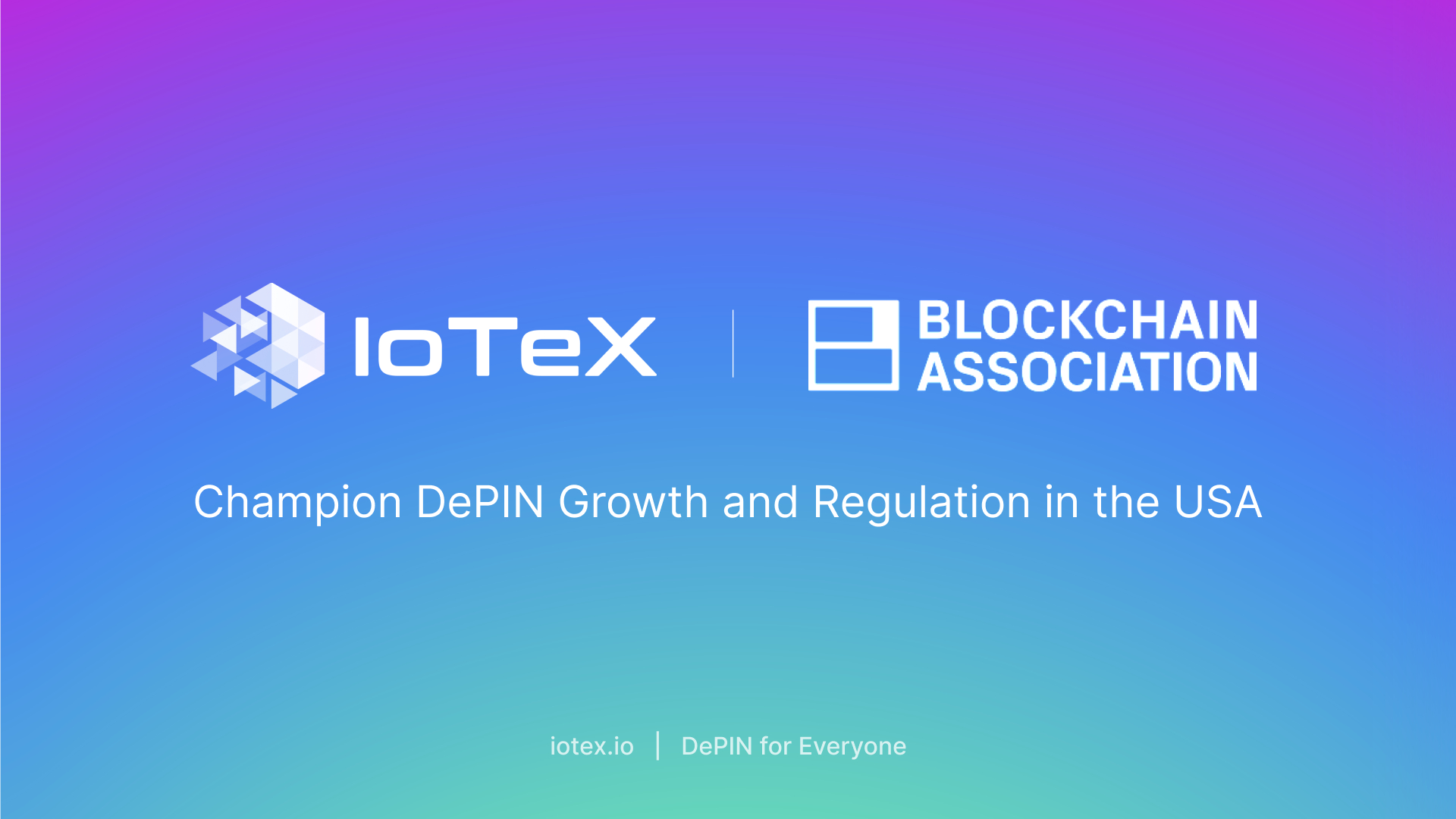Latest DePIN News

a year ago
Empowering Data Ownership in Web3 with iExec
In the evolving landscape of Web3, data ownership has emerged as a critical concern for developers and users alike. As decentralized applications (dApps) gain traction, questions surrounding who can access user data, how it is utilized, and whether users can reclaim control after sharing become paramount. The promise of Web3 is to empower users with control over their personal information, necessitating a shift in how developers approach data security and governance. iExec offers a suite of solutions designed to address these challenges, ensuring that users retain full control over their data even after it has been shared.
Developers face several key challenges regarding data ownership, including security, control, and trust. Users often hesitate to engage with dApps due to concerns about unauthorized access to their data. iExec's tools, such as DataProtector, provide robust encryption for both data storage and sharing, allowing users to encrypt files before sharing them on decentralized platforms. Additionally, iExec's on-chain data tokenization system enables users to transform their information into digital assets, granting them the ability to grant or revoke access as needed. This ensures that users can share sensitive information, like medical records, while maintaining control over who can access it and for how long.
Moreover, iExec's privacy-enhancing tools, such as Privacy Pass, empower Web3 users to monetize their personal data without sacrificing ownership or privacy. By allowing users to participate in targeted marketing campaigns while keeping their personal information confidential, iExec facilitates a secure environment for data monetization. The combination of blockchain technology and Trusted Execution Environments (TEEs) ensures that sensitive data remains protected during processing, allowing third-party applications to interact with encrypted datasets without ever accessing raw information. As developers navigate the complexities of data ownership in Web3, iExec provides the necessary tools to build trust and empower users in the decentralized ecosystem.

a year ago
Austin Federa Leaves Solana to Co-Found DoubleZero Protocol
Austin Federa Leaves Solana to Co-Found DoubleZero Protocol
Austin Federa, the former Strategy Lead at Solana Foundation, has made the tough decision to leave the project after four years. In a statement on Dec. 4, Federa expressed the difficulty of his decision but highlighted his excitement for his new venture. He is co-founding DoubleZero, a new protocol and network focused on managing high-performance, permissionless networks. DoubleZero is not a traditional layer 1 or layer 2 protocol but an innovative N1 network designed to optimize blockchain operations by increasing bandwidth and reducing latency.
According to Federa, DoubleZero aims to support tens of millions of transactions per second and serve as a neutral base layer infrastructure for high-performance blockchains. The project will operate as a permissionless network of dedicated fiber and subsea cables, involving independent contributors. The network will provide filtration and verification services through network devices running open-source code, offering improved efficiency and spam prevention in transactions.

a year ago
The Rise and Future of Decentralized Physical Infrastructure Networks (DePIN)
Decentralized Physical Infrastructure Networks (DePIN) are emerging as a transformative force in the blockchain landscape, utilizing decentralized protocols to manage physical facilities and address inefficiencies in centralized resource networks. Coined by the Web3 media and research firm Messari, DePIN has gained traction since its introduction, particularly in the latter half of 2023 and throughout 2024. These projects aim to mitigate issues such as human error, malfunctions, and financial opacity, offering more secure and cost-effective alternatives. With approximately 296 active DePIN projects currently, this sector is witnessing exponential growth, indicating a robust interest in decentralized solutions across various industries, including AI, mobility, and health.
The evolution of DePIN can be traced back to early blockchain projects like IOTA and Filecoin, with Helium's launch in 2019 marking a significant milestone for decentralized connectivity. As the term DePIN gained popularity, it encompassed a growing number of projects that leverage blockchain for data management and incentive distribution. By employing a 'plug and play' system, DePIN networks facilitate the interconnection of independent infrastructures, such as IoT devices and decentralized GPU grids. This innovative approach enables efficient data processing and administrative functions, allowing for diverse applications ranging from decentralized ride-sharing to computing resource networks.
Currently valued at $33 billion, the DePIN market is thriving, with several projects achieving market capitalizations exceeding $1 billion. As we look ahead to 2024 and beyond, key developments to watch include the integration of AI, the emergence of multi-token ecosystems, and the expansion into trade finance. Despite facing challenges such as legal uncertainties and the complexity of blockchain technology, DePIN networks are poised for increased adoption across various sectors. By removing intermediaries and creating balanced networks, DePIN could redefine resource management and utility in the decentralized world, making it essential for potential investors to conduct thorough research before engaging with these innovative projects.

a year ago
io.net and Mira Network Partner to Enhance Trustless AI Verification
In a significant development within the blockchain and AI sectors, io.net and Mira Network have announced a strategic partnership aimed at enhancing trustless AI verification. This collaboration combines io.net's decentralized GPU computing capabilities with Mira Network's advanced consensus techniques to address the ongoing challenges of accuracy, reliability, and scalability in AI outputs. The integration of these technologies is expected to deliver faster, more accurate, and cost-efficient validation of AI-generated data, ultimately improving operational efficiency and reducing latency for Mira Network's services.
At the core of this partnership is Mira Network's consensus-driven AI verification system, which significantly lowers error rates. By utilizing io.net's extensive decentralized GPU network, Mira will have access to a vast pool of cost-effective computing power, facilitating quicker and more reliable AI output validation. This collaboration also supports Mira's Node Delegator Program, which encourages contributors to delegate GPU resources and participate in AI verification operations, thereby democratizing access to AI technology and enabling participants to earn rewards.
As the demand for reliable AI solutions grows, the partnership between io.net and Mira Network is poised to set new standards in AI verification accuracy. Current research indicates that advanced AI reasoning can have error rates as high as 30%, but through their consensus approach, Mira aims to reduce these errors to below 5%, with a long-term goal of achieving less than 0.1%. This ambitious target, supported by io.net's global GPU infrastructure, will allow Mira Network to scale its verification processes effectively while maintaining high performance and low latency, ensuring that it meets the needs of its expanding client base in the evolving AI landscape.

a year ago
Apillon Launches Decentralized Cloud Function Service for Web3 Developers
Apillon has announced the launch of its Cloud function service in collaboration with Acurast, aiming to revolutionize backend operations for Web3 developers. This decentralized, serverless infrastructure is designed to enhance performance, reduce costs, and provide maximum flexibility without compromising security. By leveraging Apillon’s new service, developers can focus on critical tasks without the fear of downtime, aligning perfectly with the core values of Web3. This initiative addresses the ongoing challenge of many decentralized applications (dapps) relying on traditional centralized cloud providers, which pose risks such as single points of failure and lack of transparency.
The partnership between Apillon and Acurast seeks to bridge the gap between decentralized solutions and the robustness offered by centralized counterparts. Apillon allows developers to deploy cloud functions seamlessly, supporting JavaScript, TypeScript, and Node.js code. The platform is equipped with API, SDK, and CLI tools for efficient deployment and management. Each deployment generates a custom HTTPS gateway, enabling familiar HTTP POST requests for Web2 developers. Additionally, the integration of Acurast’s confidential compute capabilities ensures unparalleled security and privacy for sensitive workloads, fostering innovation while maintaining data integrity.
The benefits of Apillon’s Cloud Function Service extend beyond mere functionality. It offers scalability, allowing automatic adjustments based on dapp demands, and cost efficiency through a pay-as-you-go model. This service is built specifically for Web3, enabling seamless interactions with smart contracts and off-chain data. With the promise of reliability and a decentralized environment, Apillon and Acurast are paving the way for a future where Web3 applications can thrive without the constraints of traditional infrastructure, empowering developers to focus on innovation and creativity.

a year ago
Akash Network: A Leader in Decentralized Physical Infrastructure
In 2024, the cryptocurrency landscape has been dominated by the trend of Decentralized Physical Infrastructure Network (DePIN), with the Akash Network emerging as a significant player in this space. Co-founded by Greg Osuri, a notable software developer and founder of AngelHack, Akash operates as an open-source "super cloud" that facilitates the buying and selling of computing resources. This model is particularly relevant in the current age of artificial intelligence, where computing power is in high demand. DePIN leverages blockchain technology to streamline access to resources that are typically fragmented, positioning Akash as a viable alternative to centralized computing solutions like Nvidia's chips.
The Akash Network aims to democratize access to computing power, making it more affordable for individual users. Osuri emphasizes the platform's core values, stating that Akash provides users with the "right to compute," promoting freedom from censorship and encouraging free thought. The native token of the Akash Network, $AKT, serves as the currency for transactions within this ecosystem, further integrating the blockchain technology into everyday computing needs. This innovative approach has garnered significant attention and usage among users.
In a remarkable demonstration of its growing popularity, Akash reported a staggering 1,729% increase in year-over-year user fees in the third quarter of 2024. This surge indicates a strong demand for decentralized computing solutions and highlights the potential of Akash to reshape the future of cloud computing. As DePIN continues to evolve, Akash Network stands out as a pioneering force in making computing resources accessible and affordable for all users, aligning with the broader trends in the cryptocurrency space.

a year ago
IoTeX Advancing Regulatory Clarity for DePIN Projects in the U.S.
Advancing Regulatory Clarity for DePIN Projects in the U.S.
IoTeX, a leader in Decentralized Physical Infrastructure Networks (DePIN), has recently joined the Blockchain Association in Washington, D.C. This strategic move aims to enhance regulatory clarity and promote the adoption of DePIN technology and broader blockchain applications in the U.S. DePINs bridge real-world devices and infrastructure with the digital realm, offering transformative potential. However, regulatory uncertainty has been a barrier to their widespread adoption. By collaborating with policymakers through the Blockchain Association, IoTeX seeks to create clear pathways for DePIN projects to thrive and expand, ensuring accessibility and compliance for all users. This partnership is crucial for unlocking the full potential of decentralized infrastructure under clear regulations.

a year ago
Emerging Altcoins: Innovations and Opportunities in Cryptocurrency
In the rapidly evolving cryptocurrency landscape, altcoins are making significant strides by addressing the limitations of Bitcoin, such as high transaction fees and slow processing times. Among the most promising altcoin projects are Aave (AAVE), BlockDAG (BDAG), Bittensor (TAO), and Arbitrum (ARB). These projects are not only innovating in terms of technology but also creating unique opportunities for early investors. As the market remains volatile, these altcoins are carving out their niches, potentially reshaping the future of cryptocurrency with their advanced features and scalability solutions.
BlockDAG (BDAG) stands out as a leading layer-1 blockchain project, utilizing a Directed Acyclic Graph (DAG) structure combined with Proof-of-Work (PoW) consensus. This innovative architecture allows for simultaneous transaction validation, resulting in faster speeds and improved decentralization. The success of BlockDAG's presale, which raised over $159 million, reflects strong investor confidence, with the coin's price soaring by 2240%. Additionally, the introduction of a 5-tier bonus system rewards early adopters, making BlockDAG a compelling choice for those looking to invest in the next crypto bull run.
Aave (AAVE) is revolutionizing decentralized finance (DeFi) lending by enabling users to lend and borrow cryptocurrencies without intermediaries. Its unique flash loan feature allows for instant, uncollateralized loans, positioning Aave as a key player in liquidity management within DeFi. Meanwhile, Bittensor (TAO) merges blockchain with artificial intelligence, creating a decentralized protocol for AI training and deployment. Lastly, Arbitrum (ARB) addresses Ethereum's scalability issues by providing a layer-2 solution that enhances transaction efficiency. Each of these projects contributes to the broader evolution of decentralized systems, with BlockDAG emerging as a standout contender due to its innovative technology and robust community engagement.

a year ago
Lit Datil Mainnet Beta: Two Months of Progress and Future Prospects
The Lit Datil Mainnet Beta has made significant strides since its launch, showcasing the potential of decentralized key management in enhancing Internet security and functionality. Over the past two months, ecosystem partners have actively utilized the platform to develop innovative applications. The integration of Multi-Party Computation Threshold Signature Schemes (MPC + TSS) and Trusted Execution Environments (TEEs) has enabled developers to manage keys effectively while performing secure computations. The recent upgrade to the Datil network has introduced Programmable Signing, allowing for seamless transaction signing across various blockchain networks, including Ethereum and Bitcoin.
The growth metrics of the Lit network reflect its increasing adoption and utility. With over 90,000 signature requests generated using Lit PKPs and more than 50,000 using Wrapped Keys, the platform has secured over $200,000 in total value. The total number of keys created has surpassed one million, indicating a robust user engagement. Additionally, the network has processed nearly 25 million requests since its inception, demonstrating its capability to support a diverse range of applications, from decentralized finance (DeFi) to autonomous AI agents and private data marketplaces.
Looking ahead, the Lit team is focused on enhancing the platform's capabilities with new features such as longer-running Lit Action jobs, additional signature schemes, and improved performance through horizontal scaling. The anticipated launch of the v1 Mainnet in early 2025 will further solidify Lit's position in the blockchain ecosystem, introducing a live network token and additional functionalities. As the journey continues, users can expect exciting engagement opportunities through upcoming questing campaigns, fostering a vibrant community around Lit's innovative solutions.

a year ago
Matchain Partners with io.net to Enhance Decentralized AI Infrastructure
Matchain, a decentralized AI identity blockchain, has announced a strategic partnership with io.net, a leader in decentralized computing networks. This collaboration aims to enhance the infrastructure available to developers within the Matchain ecosystem by providing low-cost, scalable GPU-powered AI tools. As Matchain's official compute partner, io.net will deliver decentralized GPU infrastructure that enables a wide range of AI applications. This partnership is expected to simplify infrastructure management for developers and address the increasing computational demands of Web3 technologies, particularly in the realm of artificial intelligence.
The partnership promises to provide Matchain developers with cost-effective and scalable GPU resources, essential for the intensive workloads involved in training, deploying, and scaling AI models. Compared to traditional cloud computing services, the resources offered through this collaboration will significantly reduce costs for developers, making high-performance computing more accessible for decentralized projects. This enhancement will broaden the scope of Matchain's ecosystem, allowing developers to create decentralized applications (dApps) with innovative approaches to identity and data management, leveraging the AI-optimized capabilities of Matchain and io.net's GPU-oriented infrastructure.
Jessie Xiao, the chief commercial officer at Matchain, emphasized the importance of this partnership in facilitating the development of decentralized AI applications. He stated that teaming up with io.net has amplified their ability to provide developers with affordable, high-performance infrastructure for next-generation applications. Additionally, this collaboration aligns with Matchain's broader goal of utilizing blockchain technology for AI research. By integrating io.net's decentralized compute services, Matchain users will benefit from on-demand resources, faster payments via the Solana blockchain, and tailored support for AI model training and deployment. This partnership marks a significant advancement in decentralized AI innovation, empowering developers to build secure, scalable, and cost-efficient applications on the Matchain platform.
Signup for latest DePIN news and updates